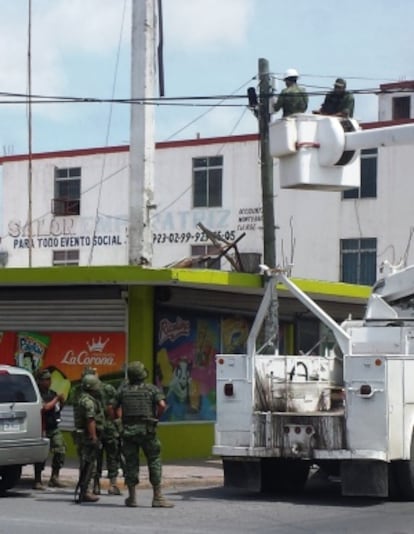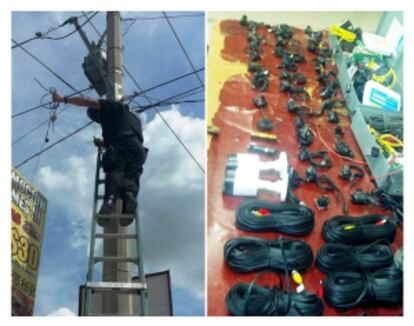The all-seeing eye of Mexico’s cartels
Authorities in Tamaulipas state take down surveillance cameras installed by secret gang


Mexico’s drug traffickers are oft-described as an “all-seeing eye” – omnipresent but seemingly never physically there.
In Reynosa, the biggest city in the northern border state of Tamaulipas, which has been wracked by drug violence, that all-seeing eye is a reality.
Recently, police announced that they had taken down 39 hidden surveillance cameras installed by traffickers at key points around the city to monitor movements by law enforcement authorities, rival gangs and ordinary citizens.
On Tuesday, the Tamaulipas Coordination Group, a task force made up of state and federal police officers, arrested two people trying to put up a secret camera on a street post.
One local cartel – whose name has not been made public – has acknowledged that it set up 38 other cameras to closely follow movements made by the army, navy, police and prosecutors, according to an official statement.
Like any ordinary security office at a Las Vegas casino, people on the drug traffickers’ payroll spend the entire day at a secret monitoring center viewing screens showing the street images captured by the cameras.

This is not the first time that authorities have become aware that they are being watched. In May, police took down a network of around 30 cameras all connected to the internet. The majority of them, set up high on street lamps and telephones posts across the city, were panning busy intersections, shopping malls and public apartment complexes. Almost everyone was under the drug mafia’s watchful eye.
Tamaulipas, where 3.3 million residents live, is a turbulent state. Despite being one of Mexico’s main manufacturing hubs and having a growth rate higher than other states, the region has been an epicenter for drug violence and murder because of its proximity to the United States.
Last year, President Enrique Peña Nieto was forced to send in troops to restore law and order in the state.
The region’s two most powerful drug organizations, the Zetas and the Gulf Cartel, have long battled for control of Tamaulipas’s 17 border crossings to ship narcotics to the north.
Sometimes authorities warn citizens not to venture out on the streets because of shoot-outs
There have been times when law enforcement authorities have had to ask citizens not to venture out on to the streets on a particular day because of the frequent shoot-outs that take place between hitmen from the rival gangs. These skirmishes can last for days.
But splits in both cartels – fueled by the recent arrests and killings of top leaders by the Mexican military – have given some of their members the opportunity to break off into mini trafficking gangs and work independently of the larger organizations.
At the same time, the unnamed mafia – an almost invisible group whose identity has yet to be revealed in official statements – is also keeping watch on their movements to ensure these newcomers don’t muscle in on business.
Street kids and waiters still serve as spies, but now surveillance is aided by a new all-seeing eye on the street, which no doubt offers a far broader view.







































